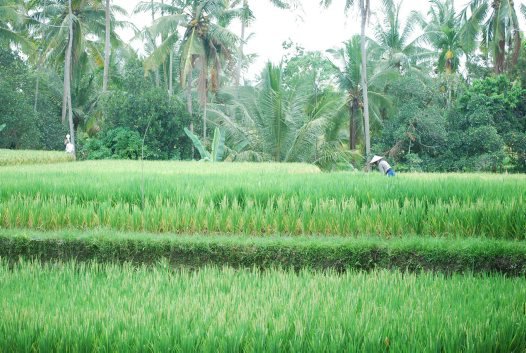For Arts Sake! – Visiting Bali #4
Walter Spies, a German artist who lived in Ubud in the late twenties, gave rice farming visual expression in his paintings and romanticised it for the European audience.
Some of Spies’ paintings must have been inspired by the landscape in this area. So, I put on my hat and dash out to the fields. For those who know and love the Australian bush and open spaces, the rice fields are markedly different.
The path through the fields is only a motorbike-wide, and paths between the fields – exclusively pedestrian. It appears that the land is completely utilized; every lump of soil has been turned over and over by hard-working hands armed with hoes and shovels.

© Australian Museum
Fields are divided by narrow walls of soil, just wide enough for a person to walk one foot in front of the other. The grass on these walls is cut by hand for cows, so not an inch of land is wasted. Around the fields are elaborate systems of narrow irrigation channels, carefully managed by irrigation societies. Water flowing from distant Lake Batur is carefully allocated and directed to different field allotments. Locally, water redirecting work is done daily. Balinese rice is harvested twice a year and other introduced varieties three times a year.
In the middle of one field, half an hour’s stroll from Ubud, is the Sari Organik farm, based on the principles of fair trading and permaculture, an invention of our own: Tasmanian, Bill Mollison; http://www.tagari.com/ The farm is involved in saving the rare varieties of rice and propagating non-hybrid seeds.
In a restaurant without walls, you can see the rice fields right to the horizon. I could not resist the Happy Potato Salad for lunch. I am glad to report it was yummy; fresh, green, with cherry tomatoes and a few pieces of farm-made cheese. Visitors are encouraged to inspect the farm, poke their noses everywhere for education and enlightenment. When in Ubud, don’t miss it, as this is a model for our sustainable future.






